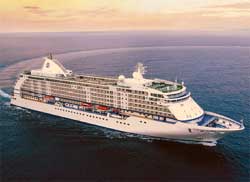What is retargeting?
Retargeting means showing a user advertising for a product that they’ve looked at in the recent past. Retargeting, from a users perspective, is broken down into two stages: In the first stage they’re looking at a product or service at the product’s web site. In the second stage they see ads on (possibly unrelated) web properties for the product or service they were looking at previously.
How is retargeting technically implemented?
At a basic level retargeting leverages a browser cookie that is set into the browser from the product page. These types of cookies are not usually set by the product owners. Instead they’re set by an advertising technology company that specializes in retargeting that has a partnership with the product owner. That cookie contains an identifier for the product the user was looking at. Later, as the user is browsing other web sites, the cookie can be accessed and read by the advertising company that set it. When the user’s browser requests an ad from that company’s server the cookie information is sent along with the request. With the product ID in hand the company may choose to show an ad for that product.
What is it good for?
Retargeting is great for advertisers, it allows the message to be reinforced by exposing a person to the product or service that they are known to be interested in. In the groups of technology that can do audience targeting, there’s nothing that comes close to the power of retargeting. Retargeted ads are 100% relevant to the user if the ads are for the exact product the user was interested in.
 Other products and services can be targeted to the users who only showed interest in a single product. Imagine a scenario where a person is shopping around for cruises. That person might start to see retargeted ads for the cruises they were interested in. But they may also start to see ads for cruises to other destinations. In essence, the interest in a cruise to a single destination has put them into a larger category of people interested in cruises. The relevance of advertising may have dropped, but the economics of advertising makes this expansion of the messaging economical. A certain percentage of people respond to the expanded scope of the product and the ends justify the additional cost and reduction in relevance for the advertising message.
Other products and services can be targeted to the users who only showed interest in a single product. Imagine a scenario where a person is shopping around for cruises. That person might start to see retargeted ads for the cruises they were interested in. But they may also start to see ads for cruises to other destinations. In essence, the interest in a cruise to a single destination has put them into a larger category of people interested in cruises. The relevance of advertising may have dropped, but the economics of advertising makes this expansion of the messaging economical. A certain percentage of people respond to the expanded scope of the product and the ends justify the additional cost and reduction in relevance for the advertising message.
What do campaigns look like in retargeting situations?
For campaigns done properly, retargeting can range from very simple to very sophisticated. Imagine that the product owner wants their product to be messaged to the user three times a day for up to 14 days after they view the product on the page. So the ad campaign will have a frequency cap of three per day and the retargeting cookie should expire in two weeks or the cookies targeted must be younger than 15 days in the targeting criteria of the campaign.
Once mixed with day parted campaigns and daily caps, the targeting can get complex, but still manageable with the right tools and reporting from an advertising platform.
How complicated does it get?
The first part of retargeting, tagging the user with the product they were interested in, doesn’t get much more complicated. Everything after that can turn into a tangle of data exchanging and campaign adjustments that can be as intimidating as the mess of cables under a computer desk. In dealing with audience data, it gets messy.
In the cruise example one could conclude that the targeting of audience was expanded beyond the scope of the initial product. The audience, in this case, is also called a ‘pool of users’ or ‘user pool’. Through the advertising technology company a user pool can actually be sold. The selling of a user pool sounds nefarious, however it usually takes the form of giving other companies the ability to target ads to the user pool. In the case of the cruisers, a company selling retirement services might take interest since a majority of people interested in taking a cruise of retirement age.
Can it be over-used?
Retargeted advertising can give users the creeps if it’s done to excess. If the targeting doesn’t expire the user can continue to see ads for products or services long after they’ve made the relevant purchase or have moved beyond the desire for the product. User pool expiration times are sometimes resisted or forgotten and ads go on until the cost-benefit ratio reverses.
In some cases a frequency cap setting may be neglected for retargeting campaigns and the user is bombarded by ad after ad for the same product. This can do a lot of harm for a brand’s reputation. In most cases the proper settings are made and the campaigns perform very well.
As one of the most powerful tools for product marketing, retargeting has become a cornerstone of online advertising.
[SlideDeck id=’97’ width=’100%’ height=’250px’]





Retargeting makes sense for all the above reasons, this isn’t anything new. I still think where trading desks are perhaps getting it wrong, is putting too much emphasis on the RTB inventory and getting their retargeting volume from them sources.